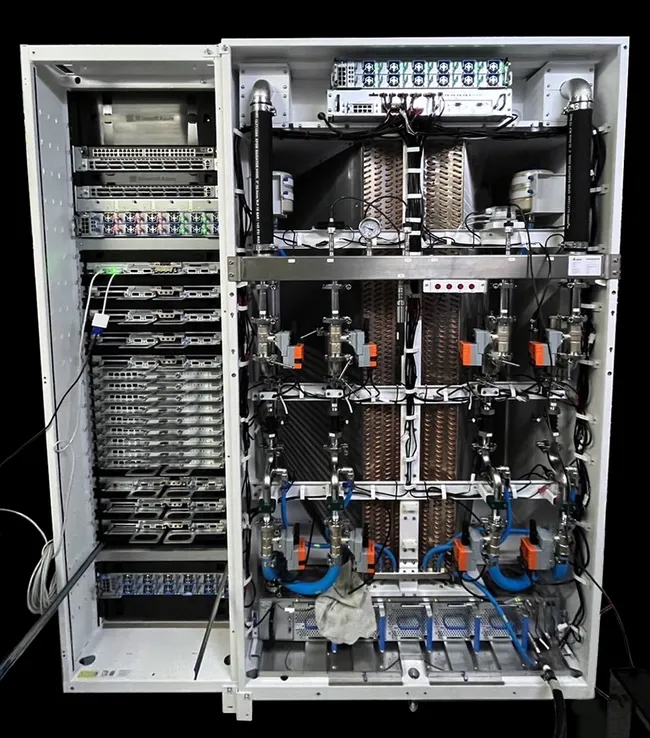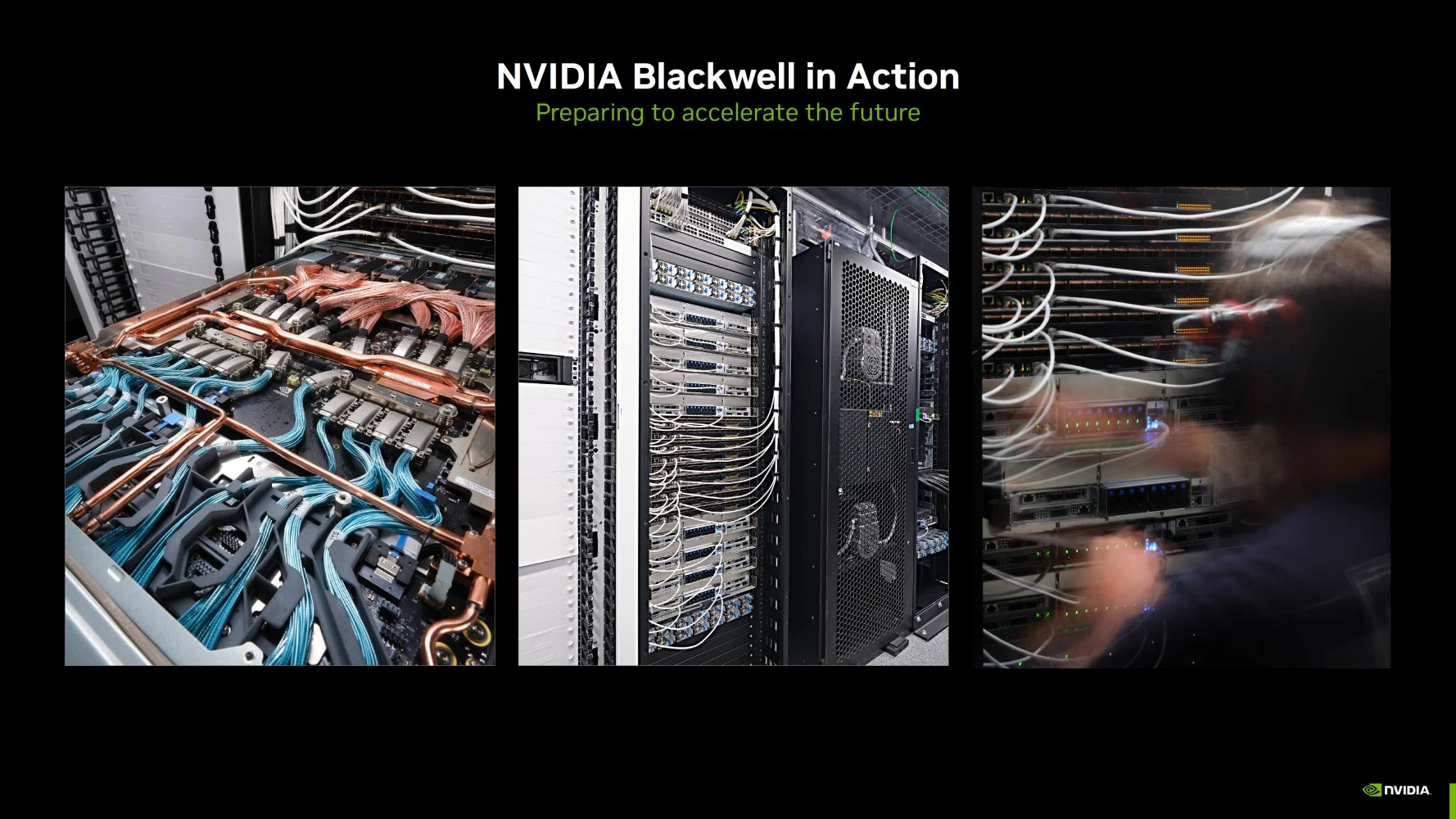The Article Tells The Story of:
- Overheating Issues: Nvidia’s Blackwell GPUs overheat in high-capacity servers, causing delays for customers like Google and Meta.
- Design Changes: Nvidia is redesigning server racks and making adjustments to address the overheating problem, leading to delays.
- Previous Flaws: A design flaw in Blackwell GPUs caused production delays, requiring modifications to improve reliability.
- Customer Impact: The delays affect Nvidia’s clients’ AI deployment timelines.
Nvidia’s Blackwell GPUs, the next-generation processors designed for AI and high-performance computing (HPC), have encountered significant challenges. Reports indicate overheating problems when installed in servers with 72 GPUs per rack. These issues have forced Nvidia to redesign its NVL72 servers and delay shipments, raising concerns among major clients like Google, Meta, and Microsoft.
Overheating Problems Impact Performance
The overheating occurs when Blackwell GPUs are used in high-capacity racks consuming up to 120kW of power. Excessive heat limits performance and risks damaging components, leading Nvidia to make multiple design revisions. Customers fear that delays caused by these changes will disrupt their plans to deploy new processors in their data centers.
Check Out similar Article of Nvidia Fixes Design Flaw in Blackwell AI Chips. on SquaredTech
Nvidia has instructed suppliers to modify rack designs to improve cooling. These adjustments include engineering updates aimed at ensuring better thermal management. While design changes are common in large-scale tech rollouts, they have extended the production timeline. Nvidia continues to collaborate with suppliers and cloud providers to refine the racks and ensure reliability.
Technical Challenges and Delays

The overheating issues follow earlier problems during Blackwell’s development. Nvidia previously faced delays due to a design flaw in the processor’s packaging technology. The GPUs rely on TSMC’s CoWoS-L packaging, which uses local silicon interconnect (LSI) bridges to achieve high data transfer speeds. A mismatch in thermal expansion properties caused warping and failures, necessitating changes to the GPU’s design.
Nvidia addressed this flaw by modifying the chip’s top metal layers and bump structures to improve production reliability. These fixes required new masks and delayed mass production until late October. As a result, shipments of Blackwell GPUs are now scheduled to begin in late January.
Implications for Nvidia’s Clients
Tech giants like Google, Meta, and Microsoft depend on Nvidia’s GPUs to train large language models and power advanced AI applications. Delays in delivering the Blackwell GPUs have impacted their timelines and product rollouts. Nvidia acknowledges these challenges but maintains that such setbacks are part of developing cutting-edge technology.
Check Out similar Article of AMD Launches Powerful New AI Chip to Challenge Nvidia’s Blackwell. on SquaredTech
Conclusion
Nvidia’s Blackwell GPUs promise to deliver powerful AI capabilities but face hurdles in their deployment. The company is working to resolve overheating issues through design updates and collaboration with partners. While delays are unavoidable, Nvidia aims to meet customer expectations with a stable and efficient final product.
Stay updated: Tech News


